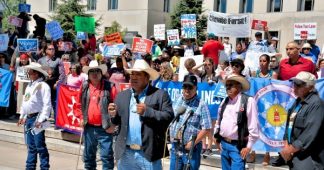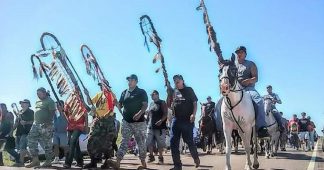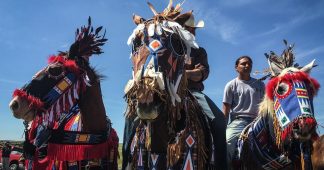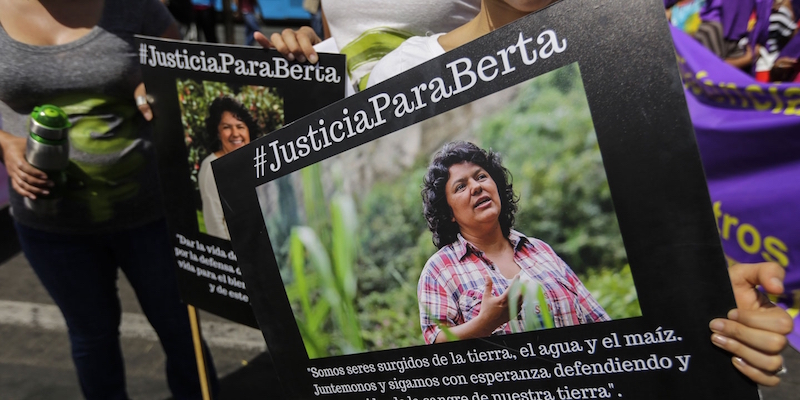Activists and law enforcement clashed this weekend in North Dakota over construction of the Dakota Access Pipeline, leading to dozens of arrests and a temporary road closure as protesters set up camp near the pipeline’s proposed path.
http://edition.cnn.com/2016/10/22/us/dakota-access-pipeline-arrests/
The peoples of Standing Rock is getting ready for the winter. Winters are hard and merciless in the Great Plains of the United States, with temperatures below -20ºC (-4 ºF). They transport blankets, water, food, jackets and timber to their camps at the riverside of the Missouri River, North Dakota. Although the construction of the “Dakota Access” oil pipe has been temporarily been suspended, the indigenous peoples are not leaving. Their fight intends to definitively cancel the terrible project.
Extermination continues
The issue is much more than opposing the oil pipe that would go directly through indigenous territories and small farms in that forgotten regions of the US. Multiple indigenous peoples from all around the country have decided to fight alongside the Lakota, Dakota and Sioux people because they see in that battle a second clash of worlds, as terrible as the conquest or the genocide of the 16th to 19th centuries in the North.
According to calculations, during that period of time, the indigenous population of the U.S. was decimated by massacres and diseases brought by Europeans, from 10 million to less than 250,000 people in 1900. The U.S. government, which was in a full-fledged territorial expansion, used a policy of constant betrayal, signing treaties that were violated sooner than it took the ink to dry.
This part of history makes the U.S. population uncomfortable, and they still try to forget it or hide it with a mix of guilt and racist indifference —the same racism that justified the doctrine of manifest destiny. Now the lack of media coverage of this historic protest of the Sioux is evident. Judging by the news, the thousands of indigenous peoples that gathered to protect their sacred sites, their river and their culture are non-existent. Media extermination follows the attempts of physical extermination.
Indigenous peoples resist in unity
The Sioux tribe of Standing Rock, North Dakota, began to resist the project to build a 1,200 mile-long oil pipe that would transport approximately 500,000 barrels of oil per day from the Dakotas to Illinois and Texas. The pipe would cost 3,800 million dollars and would go under the Missouri River, near their reserve, destroying sacred places —including ancestral cemeteries— and threatening the purity of the water.
Furthermore, this deepens the model of fossil fuels that cause global warming. Dave Archimbault, chief of the Sioux Standing Rock Tribe, points out that the vast solidarity of other tribes and indigenous peoples around the world is due to a fundamental reason: “We all have similar struggles, because the world depends on fossil fuels and that affects us and hurts the Mother Earth. Indigenous peoples are the ones that rise with their spirits to say ‘it’s time to protect that which is most valuable to us”.
The recent wave of plundering and contamination of the United States indigenous territories has sparked a process of organization of indigenous peoples. They have already defeated the Keystone oil pipe Project despite the powerful forces they had to fight against. They know that their unity against the threat has been key to answer with strength against the Dakota Access project.
Even tribes with historic differences have united in the struggle and signed treaties of joint defense of their peoples and their lands. The Oceti Sakowin camp derives its name from the 7 fires of the Sioux tribe, which hadn’t been together for decades until now. The resistance brings together the elderly and the youth, who share daily life in the camps. They have also done an alliance —which was paramount to defeat the Keystone project— with the small ranchers and farmers whose lands have been expropriated from them due to the building of the oil pipe. Farmers from Iowa, as well as those from Standing Rock, have interposed a lawsuit against the project.
Peoples from Latin America have sent representatives to Standing Rock. Nina Gualinga, representative of the Kichwa people of Ecuador, points out that indigenous peoples are only 4% of the world population but they are guardians of 80% of the biodiversity which they have protected for millennia. Mario Luna, one of the leaders of the movement in defense of water of the yaqui tribe in northern Mexico and former political prisoner was there because the traditional authorities of his people see Standing Rock as part of the same struggle they are carrying out against the Independence aqueduct.
Indigenous peoples say they’re not protesting, but protecting. Protecting water, supervivence (“children can’t drink oil!”) and an ancestral worldview that considers some areas of teh river and the land as sacred places that are intrinsically tied to their rites. Several of these sites have already been destroyed by the Energy Transfer Partners company.
The defense of Standing Rock is an emblematic struggle that expresses the fundamental contradiction between a lifestyle that leads to the destruction of the planet and one that protects a vital bond between humanity and its natural environment.
First published in www.thedawn-news.org











